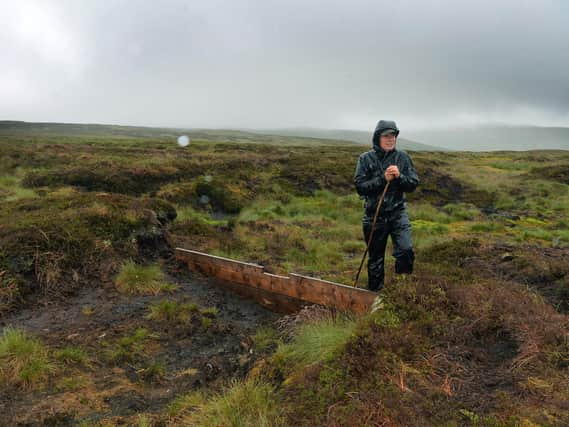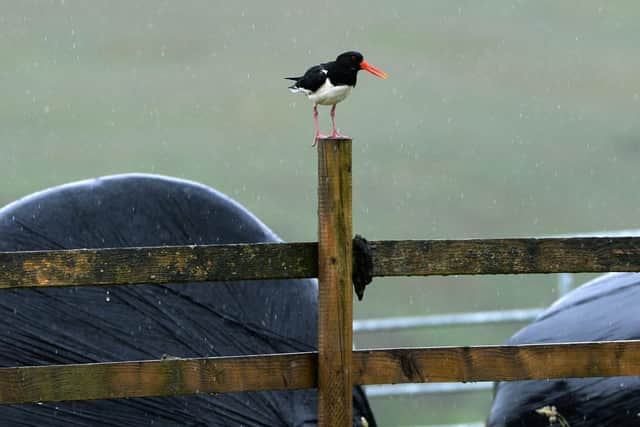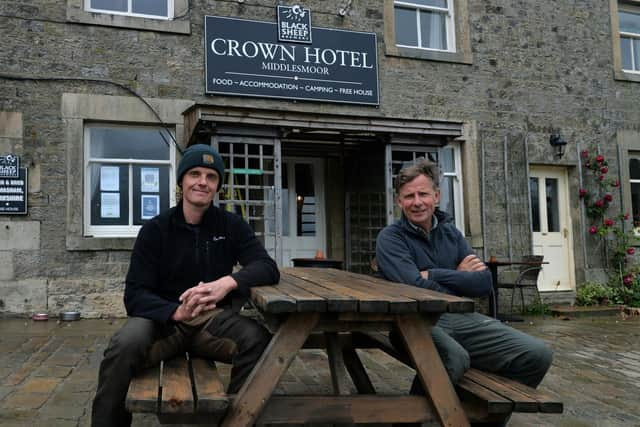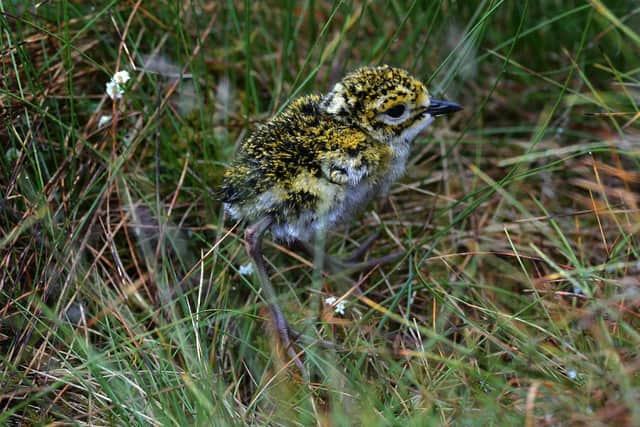Meet the Nidderdale landowner who believes grouse moors have a vital role to play in conservation and fighting climate change


Beyond the welcoming pub and selection of holiday cottages, the surfaced road peters out into rutted farm tracks and tourism-brochure Nidderdale is left behind as the moors become wilder and more remote.
It is isolated spots such as these that are under more scrutiny than ever before for one of the main activities that takes place here - the shooting of red grouse. Land use in and management of the uplands for and to benefit field sports has permeated wider public consciousness, and demands for reform and regulation are increasing.
Advertisement
Hide AdAdvertisement
Hide AdThe owners of estates like Middlesmoor have been held responsible for the persecution of protected birds of prey, the increase in flooding of urban areas and the release of additional carbon emissions. Their land holdings are the ancient peatlands we desperately need to preserve to combat climate change and they have been accused of worsening the environmental emergency in pursuit of profit and tradition.


Ben Ramsden, whose family have owned Middlesmoor since 1919, believes he and his peers have become scapegoats and that most sporting estates are managed far more responsibly than the general public realises. Middlesmoor, near Pateley Bridge, has been a grouse moor since Victorian times, when the advent of double-loading shotguns saw the pursuit soar in popularity with the gentry. The Ramsdens bought their estate from an MP after Ben's great-grandfather made his fortune in coal mining. Today, he is a regular visitor and his brother Stephen a farmer in residence.
The caveat for purposes of comparison is that Middlesmoor is not an intensively managed, driven grouse shoot. Corporate clients do not arrive from London to bag hundreds of birds in a competitive massacre. Instead, Ben candidly but unhappily admits that grouse numbers are currently low, thanks mainly to the impact of the heather beetle, a poorly understood parasite that deprives the game birds of their main food source. He and the estate's only gamekeeper, Joe Briley, believe warmer, wetter winters are enabling them to thrive.
Instead, a long-term syndicate made up of family and friends keeps the shoot alive, bagging a sustainable number of birds and sometimes only shooting for a few days each year. Ben says he has 'shot enough birds' in his lifetime and instead enjoys the simpler pleasures of a day's hike on the moors and dinner in the estate-owned Crown Hotel later. Shooting is not the main income stream here - there are 13 tenanted farms.
Advertisement
Hide AdAdvertisement
Hide AdAs we drive onto the moor, Ben promises me birdlife aplenty. On a cool, wet day, the vista initially seems bleak - but within 10 minutes I have seen lapwing, curlew, golden plover, meadow pipit and oystercatcher, many with their young. Surprisingly, they are far more numerous than the red grouse (there are also black grouse in the area, but they are not shot as game due to their low numbers).


Many of these species are 'red listed', and head keeper Joe is adamant that they thrive here only because of his permitted predator control work. His knowledge is impressive - he knows which pairs nest where, and can identify each at a distance - and he admits to admiration for the foxes and stoats that take chicks and which he sets traps for. The likes of oystercatchers and plovers are waders, often seen on the coast - but they migrate inland to Middlesmoor in part because Joe believes they feel safe. To him, nature is about 'balance' - allowing the more fragile species to survive by controlling the proliferation of the more adaptable.
We tackle the sensitive subject of raptors. Ben condemns the killing of these legally protected birds that prey on grouse, and says there are several hen harrier nests and a larger winter roost site in the area. Species such as merlin are also often seen. Although he is not generally supportive of the potential introduction of licensing for grouse moors and the extra scrutiny it would bring, he is in favour of estates with poor track records on persecution being monitored. He believes gamekeepers who kill these birds are rogue operators, often with an 'old school' mentality which is no longer widely tolerated, and hopes peer pressure can lead to a change in culture.
We are also here to see the peat - the unique upland soil where carbon is stored. Shoots are often accused of indiscriminate heather burning that releases the carbon into the atmosphere, but Joe insists burning - which encourages new growth for the grouse to feed on - is conducted carefully over a small area, with only the top layer, not the peat itself, ignited. Wildfires are the biggest fear here, and Ben has seen at first hand the devastation they can cause when visiting a barren Saddleworth Moor. Middlesmoor is currently the subject of a 10-year research study by University of York scientists into the impact of heather burning, and so far the findings have been inconclusive.
Advertisement
Hide AdAdvertisement
Hide AdHalf of Ben's 6,000 acres are leased from Yorkshire Water, who have a long-standing interest in the area due to its history of supplying Leeds and Bradford with water from the nearby reservoirs at Scar House and Gouthwaite, The pipeline runs under the grouse moors, and they have supported estate efforts at flood mitigation. The 'grips' - ditches installed in the 1970s to drain the land for sheep grazing - are now being removed and the policy reversed with the aid of DEFRA grants, and dams have been constructed on the peat instead.


Heather is being restored, new vegetation encouraged and sphagnum - the all-important moss which eventually becomes peat - is clearly visible and appears to be flourishing. Slowing the flow and absorbing rainfall before it can cause overflows in the valley bottom is a priority, and Ben adds that the effects of large-scale tree planting in flood management are, in his view, overstated. In some places, his stick sinks 6ft below the surface of the peat.
Another criticism of sporting estates is that they reserve land in some of the most scenic parts of the country for the exclusive use of a privileged few. Shooting is certainly an expensive hobby, and on Middlesmoor restricted to a small group connected to the estate, but much of the moor is part of Right to Roam except during nesting season, and maps are provided for walkers. The diversification affecting other dales is apparent in the village, where a campsite has opened, a number of new properties have been purchased as holiday lets and a farmer is experimenting with Wensleydale cheesemaking. The pub is busy - in season the grouse are served on the menu rather than wasted.
Ben ultimately cautions against the imposition of urban morals on the upland way of life, and urges opponents of shooting to consider the livelihoods a rewilded, uncultivated moor would be unable to support - the farmers whose tenancies are passed down through the generations, the landlady struggling to keep the pub going during quiet winters, the Danish woman who moved to Middlesmoor to set up a gundog training school, and the American who became stranded in the village during lockdown and whose photographs of community life now adorn the walls of The Crown. All are, in some way, dependent on a balance being struck on the hills above.